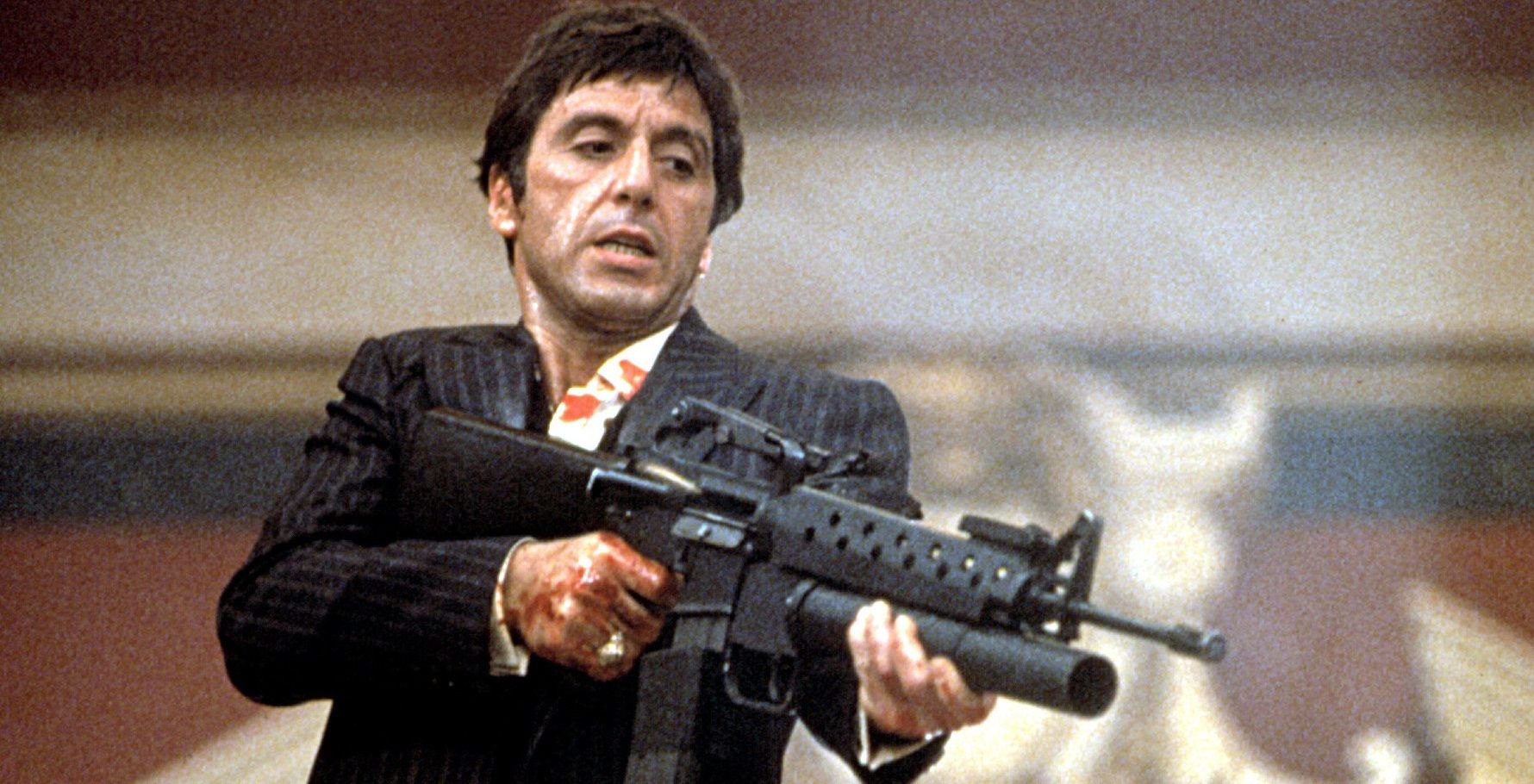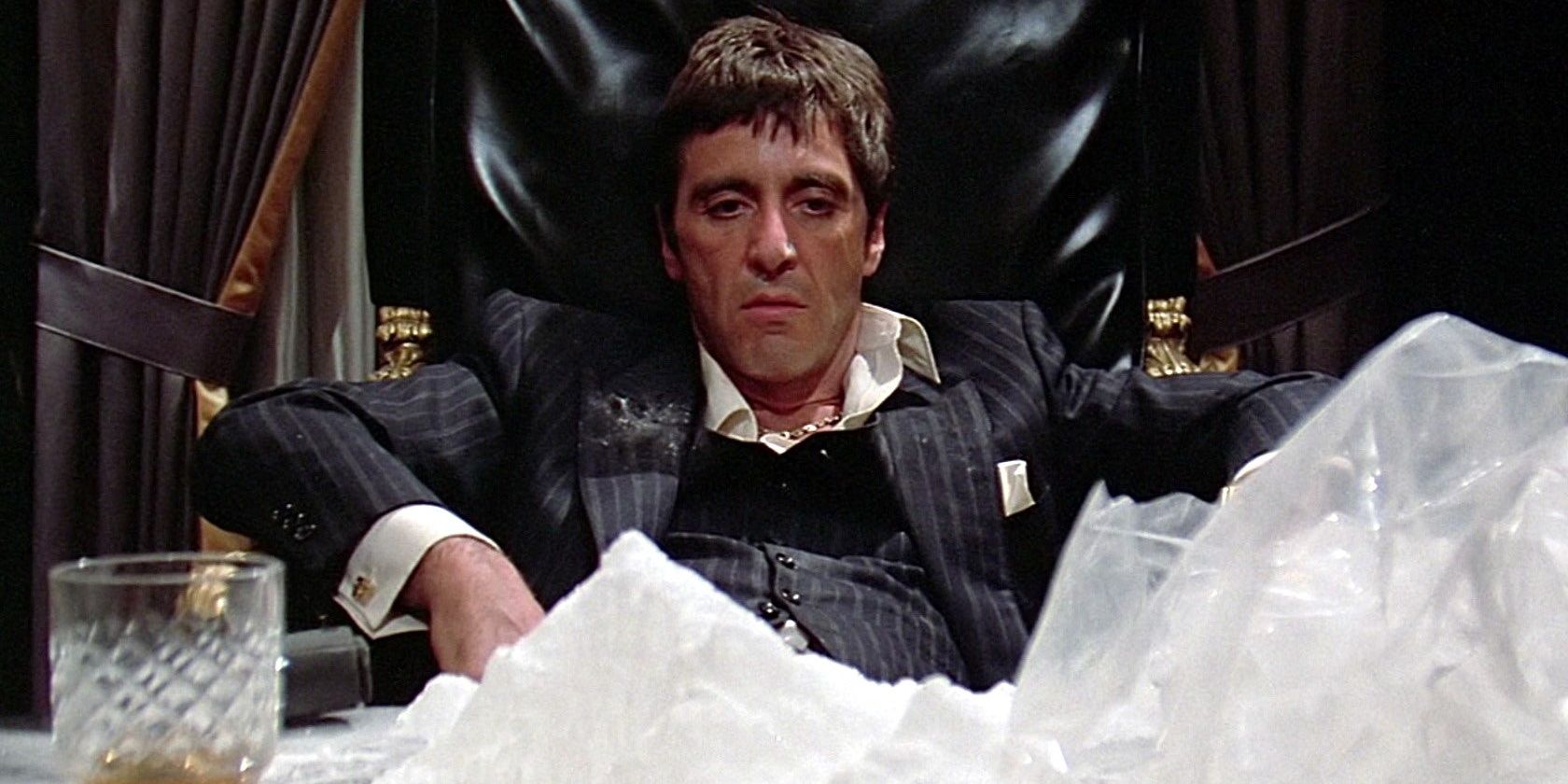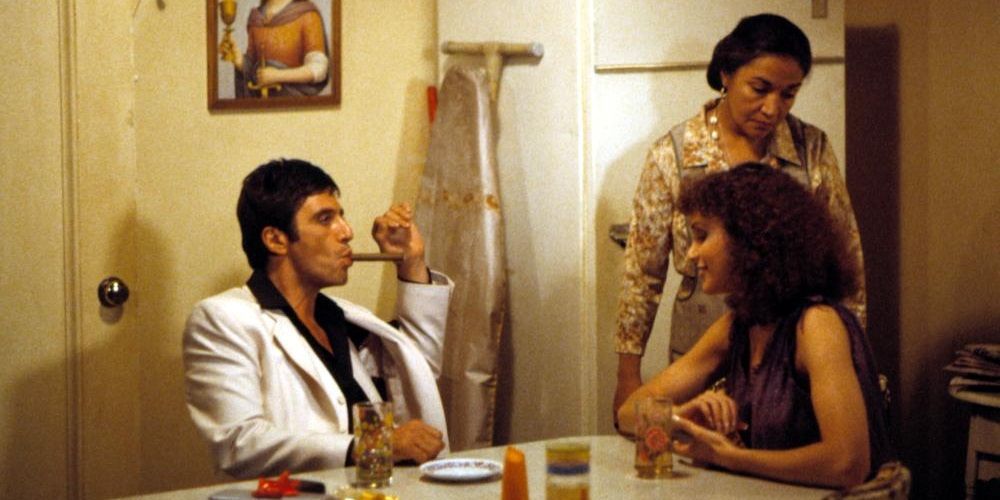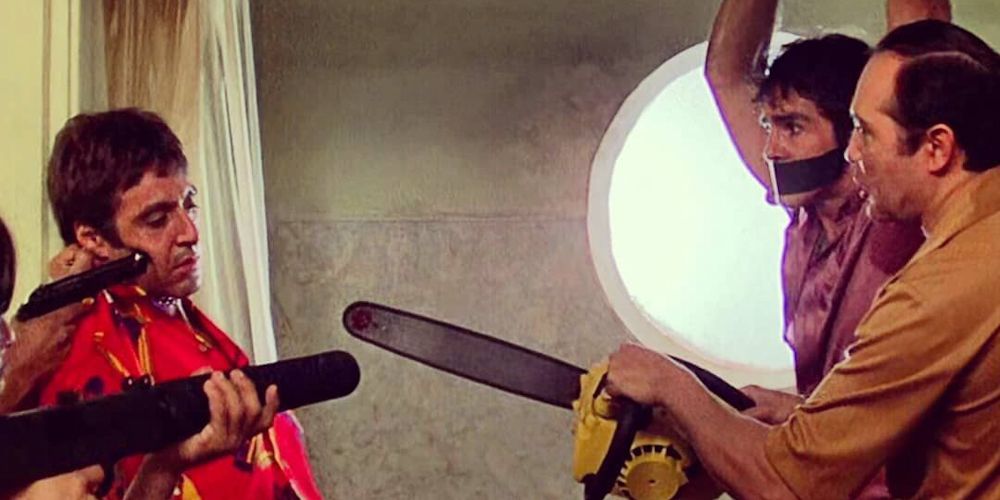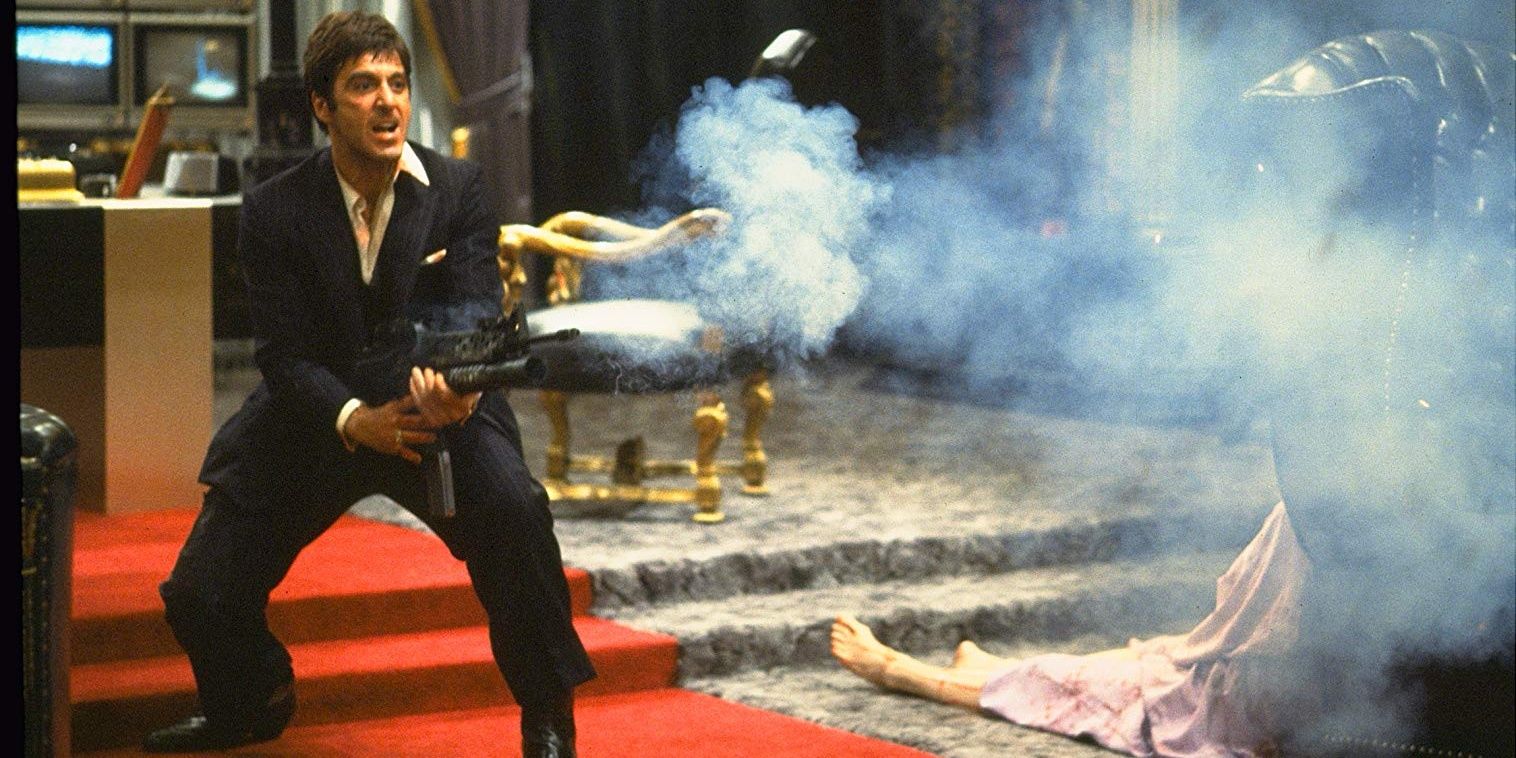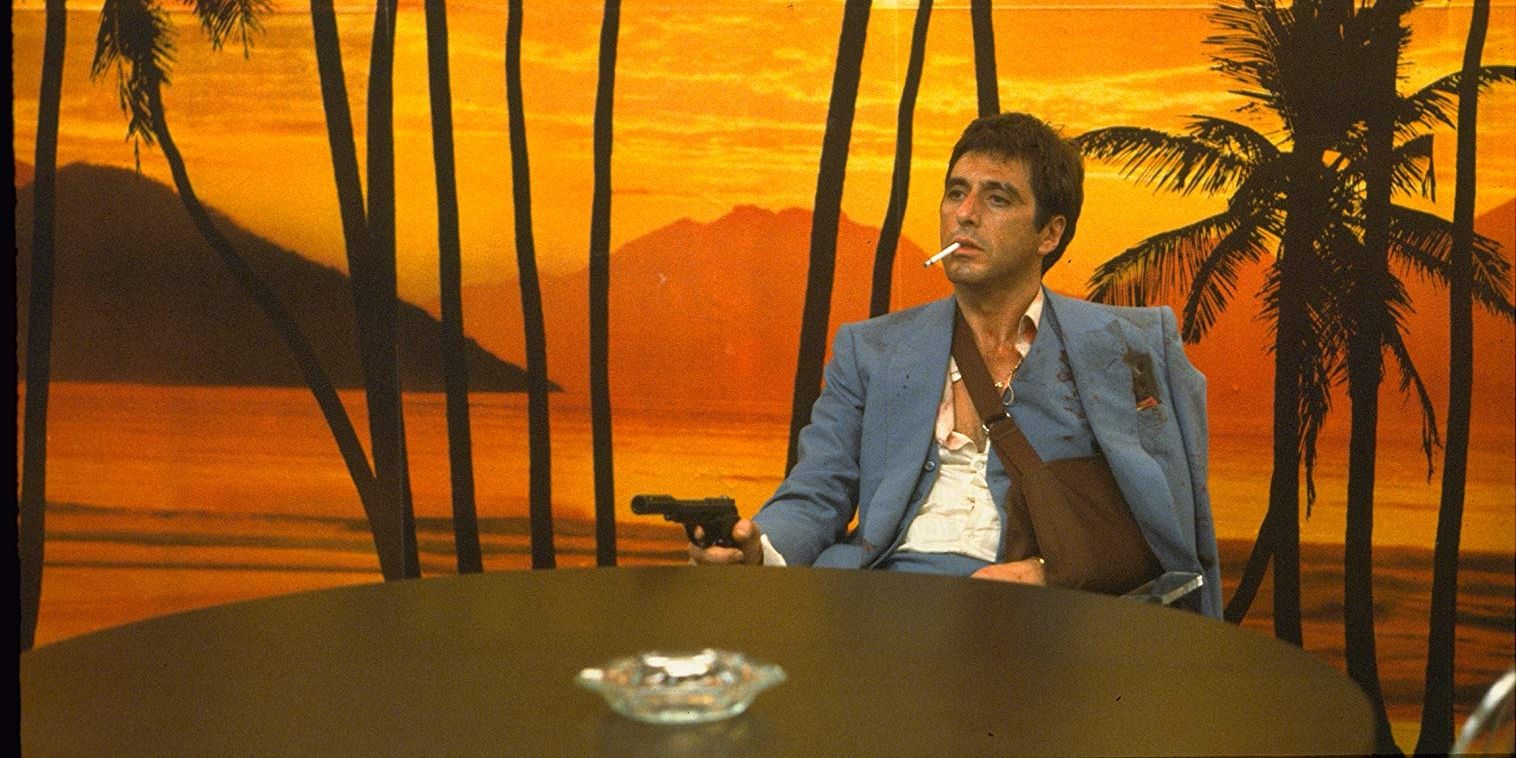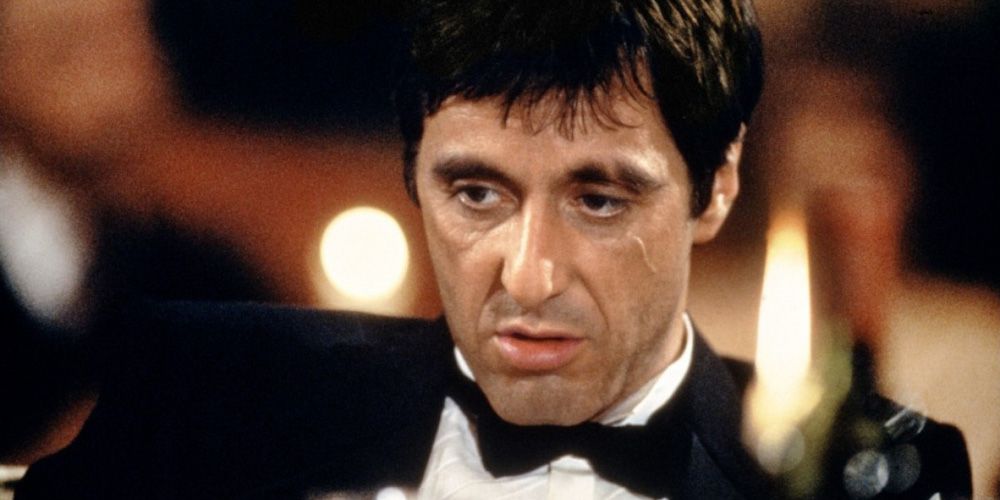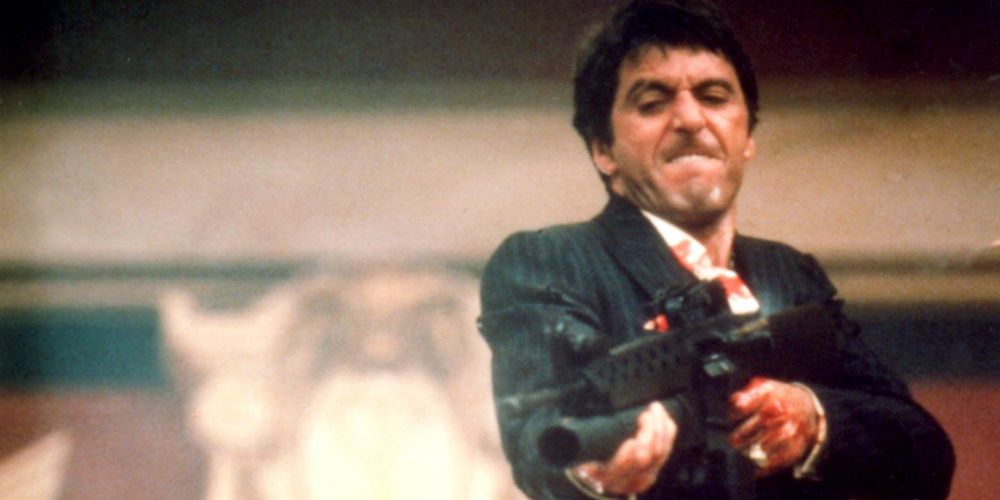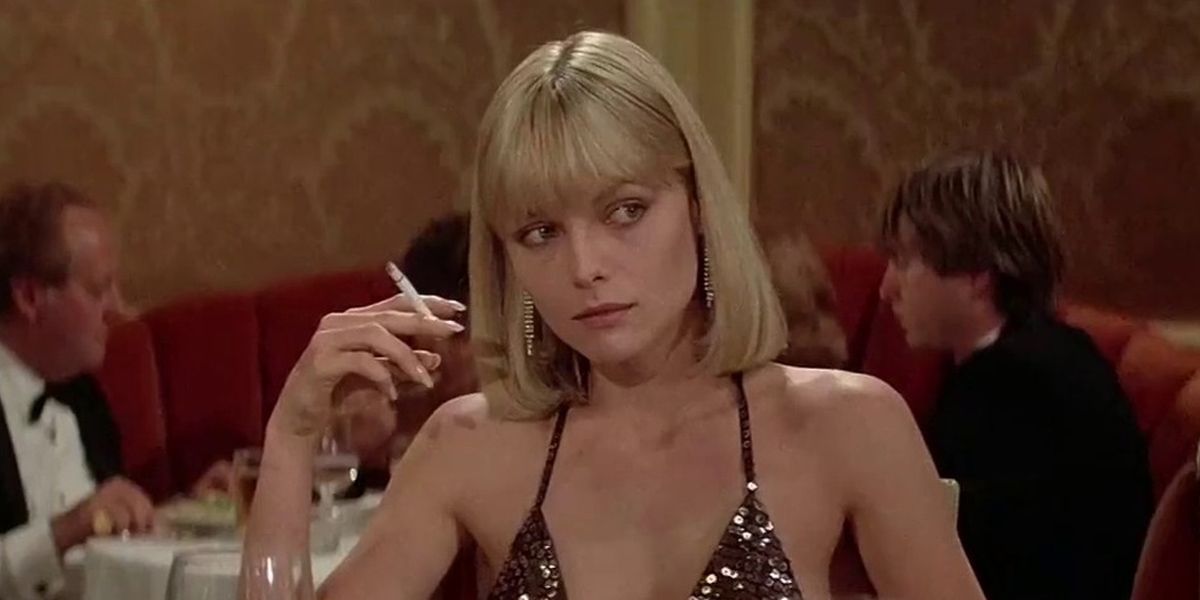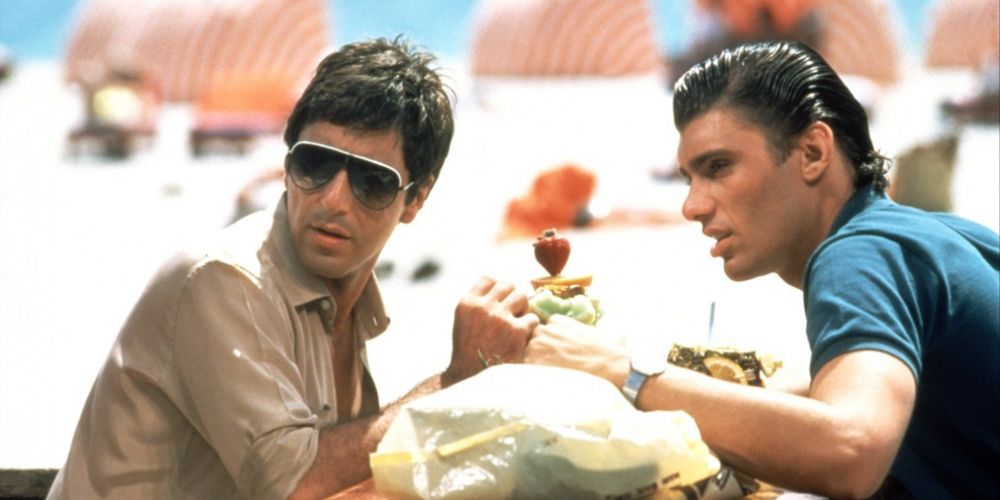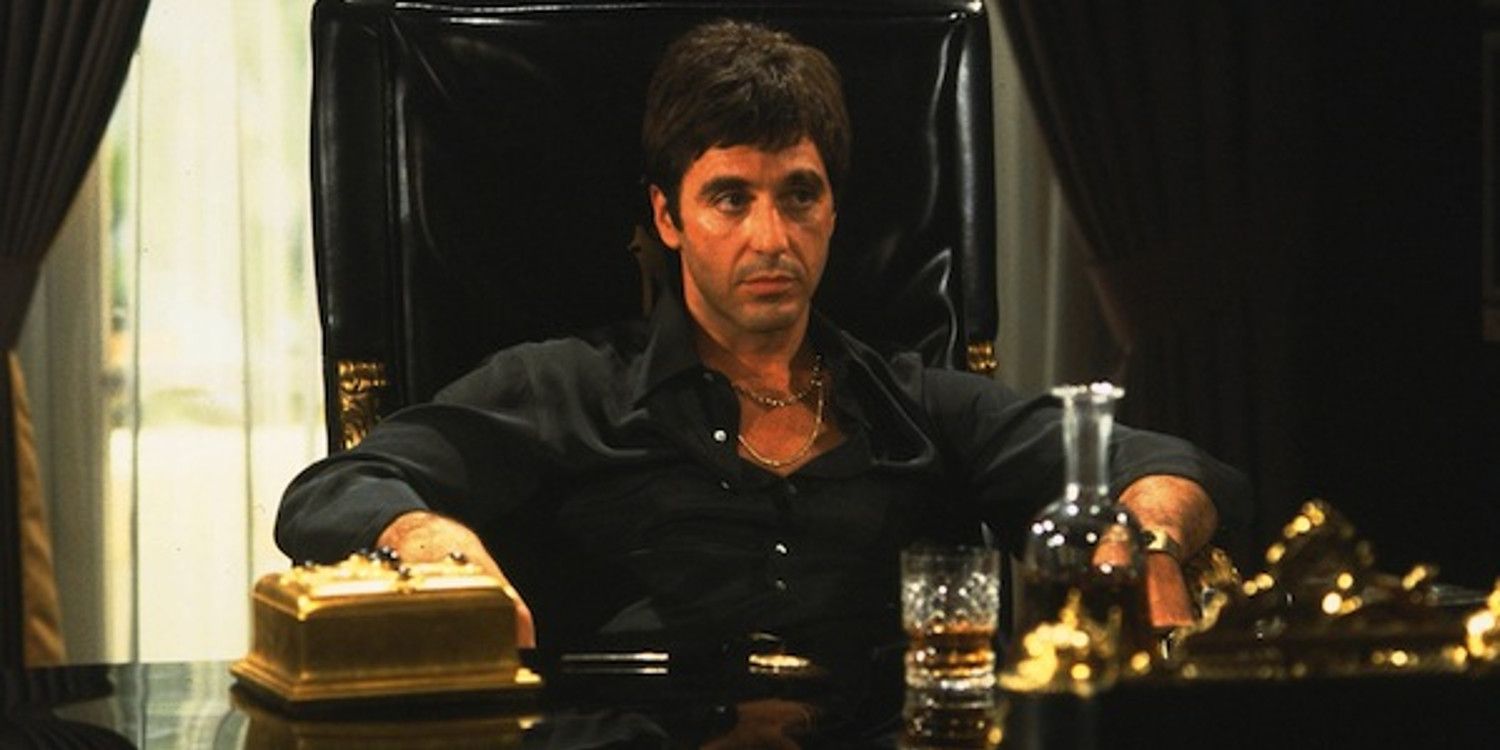Although it’s billed as a remake of the 1932 Howard Hawks-directed gangster classic of the same name, Brian De Palma’s Scarface is its own beast. It’s almost twice the length of the original. De Palma and his screenwriter Oliver Stone took the basic rise-and-fall structure of Hawks’ film and transplanted it into modern times.
Whereas the 30s original was about how Prohibition created the Mafia, the 1983 remake is about how anti-drug laws are creating drug lords. Al Pacino stars as Tony Montana, a Cuban immigrant who builds a cocaine empire in Miami. Here are 10 Behind-The-Scenes Facts About Scarface.
The Prop Cocaine Permanently Damaged Al Pacino's Nose
In the years since Scarface was released, there’s been a widespread rumor that the cocaine snorted in the movie was real. This is just a myth; prop cocaine was used. However, it’s never been revealed what the stand-in was.
It looks like powdered milk, but it could’ve been anything. Whatever it was, it permanently damaged Al Pacino’s nasal passages. He may not have been snorting actual cocaine, but he was snorting the prop cocaine—he wasn’t pretending—and, according to Pacino, “For years after, I have had things up in there. I don’t know what happened to my nose, but it’s changed.”
The Actress Who Played Tony Montana's Mom Was Only Four Years His Senior
Scarface is one of those intimate gangster movies in which we get to meet the lead character’s mother. Tony Montana’s mother in the movie is credited simply as “Mama Montana,” and she was played by Miriam Colon.
In real life, Colon was only four years older than Al Pacino, who was supposed to be playing her son. Colon’s storied career spanned seven decades, and, in 2014, she was awarded the National Medal of Arts by then-President Barack Obama for her contributions to the entertainment industry. Sadly, Colon passed away in 2017 at the age of 80 due to complications from a pulmonary infection.
Brian De Palma Secretly Released An Uncensored Cut
When director Brian De Palma first submitted Scarface to the MPAA in order to get it rated, the board gave it an X rating, which is box office poison, so De Palma had to make some cuts and resubmit the film in the hopes of getting a more box office-friendly R rating.
However, after three submissions, the X rating persisted. De Palma really didn’t want to make any more cuts, so producer Marty Bregman organized a hearing with the MPAA in which actual narcotics officers praised the film’s realism. The MPAA eventually relented and gave the third cut an R rating for its realistic portrayal of real-world issues. De Palma figured that if the third cut was acceptable for that reason, the first one would be, too. The studio told him he couldn’t release the first cut, but, since the executives couldn’t tell much of a difference between the cuts, he did anyway.
The Prop Guns Were Synced With The Cameras
In most action movies featuring gun violence, you’ll see that the muzzle flashes rarely line up with when the actors are firing the prop guns. This is because, after shooting these scenes from various different angles with a bunch of cameras that aren’t always on and then cutting the whole thing together, it can be hard to keep the muzzle flashes consistent.
The production team working on Scarface managed to make their muzzle flashes more in-sync than most movies by fitting the prop guns with electronic synchronizing devices, which meant they would only fire when the camera shutter was open.
The Film Was Protested In Miami, So It Was Mostly Shot In L.A.
When Scarface was announced as the tale of a Cuban immigrant becoming a drug kingpin in Miami, Miami’s Cuban community was understandably outraged. As a result, most of the movie was shot in Los Angeles as opposed to Miami. In Miami, there was a city-wide debate over whether or not the crew should be allowed to film there, and the Miami Tourist Board eventually decided not to let them. So, L.A. was used as a double for Miami. Some of L.A.’s streets and buildings had to be dressed up by the crew to recreate the look and feel of Miami.
Al Pacino Was Extremely Committed To His Role
Al Pacino has said that Tony Montana is one of his favorite characters he’s played. He was really committed to the role while he was making the movie. In order to stay in character, the actor told John A. Alonzo, the film’s director of photography, to only speak to him in Spanish. This helped him to stay in the mindset of his Cuban character. Funnily enough, despite the fact that the movie is named Scarface, Tony is only ever actually referred to by that nickname once in the whole three-hour runtime, and it’s in Spanish, no less (“Cara de cicatriz”).
Steven Spielberg Co-Directed The Final Shootout
Steven Spielberg and Brian De Palma are part of a class of film students that took Hollywood cinema by storm when they graduated in the 1970s (the group also includes George Lucas, Martin Scorsese, and John Milius), and, ever since they met, the two directors had wanted to collaborate on a project.
De Palma invited Spielberg to set of Scarface while he was shooting the climactic shootout at Tony’s mansion, and that sequence ended up becoming the project they would collaborate on. Spielberg co-directed the scene with De Palma but decided not to take credit, as he wanted Scarface to be De Palma’s movie.
Glenn Close And Carrie Fisher Were Considered For The Role Of Elvira
The role of Tony Montana’s distant wife Elvira in Scarface was played brilliantly by Michelle Pfeiffer, who turned out to have the perfect blend of mystery and playfulness to do the character justice. However, Pfeiffer was not the producers’ first choice for the role. Glenn Close was their top choice, but the studio vetoed the decision as they didn’t feel she had the right look. After Close was vetoed and before Pfeiffer was cast, such huge names as Sigourney Weaver, Geena Davis, Sylvia Kristel, Sharon Stone (who would go on to play a mob wife in Casino), Kelly McGillis, and Carrie Fisher.
Scarface Once Held The Record For Most F-Bombs In A Movie
For years, the Family Media Guide has kept track of all the profanity, violence, and sexuality featured in Hollywood movies. When Scarface was released, the Family Media Guide declared it to have the most F-bombs of any movie in history. The film contains 207 uses of the F-word and its variants, which works out at around 1.21 F-words per minute of runtime.
This total has since been topped by such gloriously profanity-laden movies as The Wolf of Wall Street, Straight Outta Compton, and Pulp Fiction. The current record-holder is Swearnet: The Movie, which has a whopping 935 uses of the F-word.
Oliver Stone Battled His Own Cocaine Addiction While Writing The Script
Screenwriter Oliver Stone was able to draw from his own experiences while he was writing the tale of Tony Montana’s slip into cocaine addiction because he was battling such an addiction of his own. He started off writing the film in Florida and the Caribbean, interviewing cops and criminals to get a rounded view of the illegal trade that he was portraying in the script.
However, this was only fueling his addiction, so he moved out to Paris to get a change of scenery and nail down the script. While he was there, he kicked his coke habit and managed to write the script “totally f*****g cold sober.”

